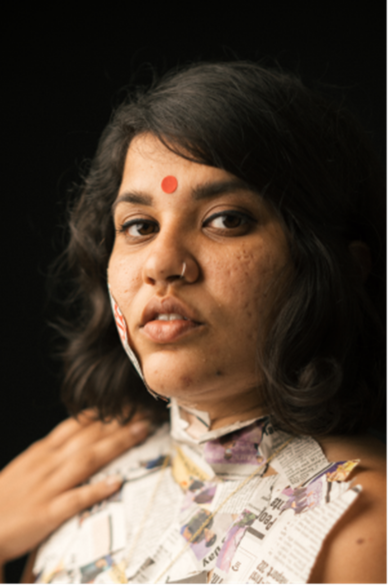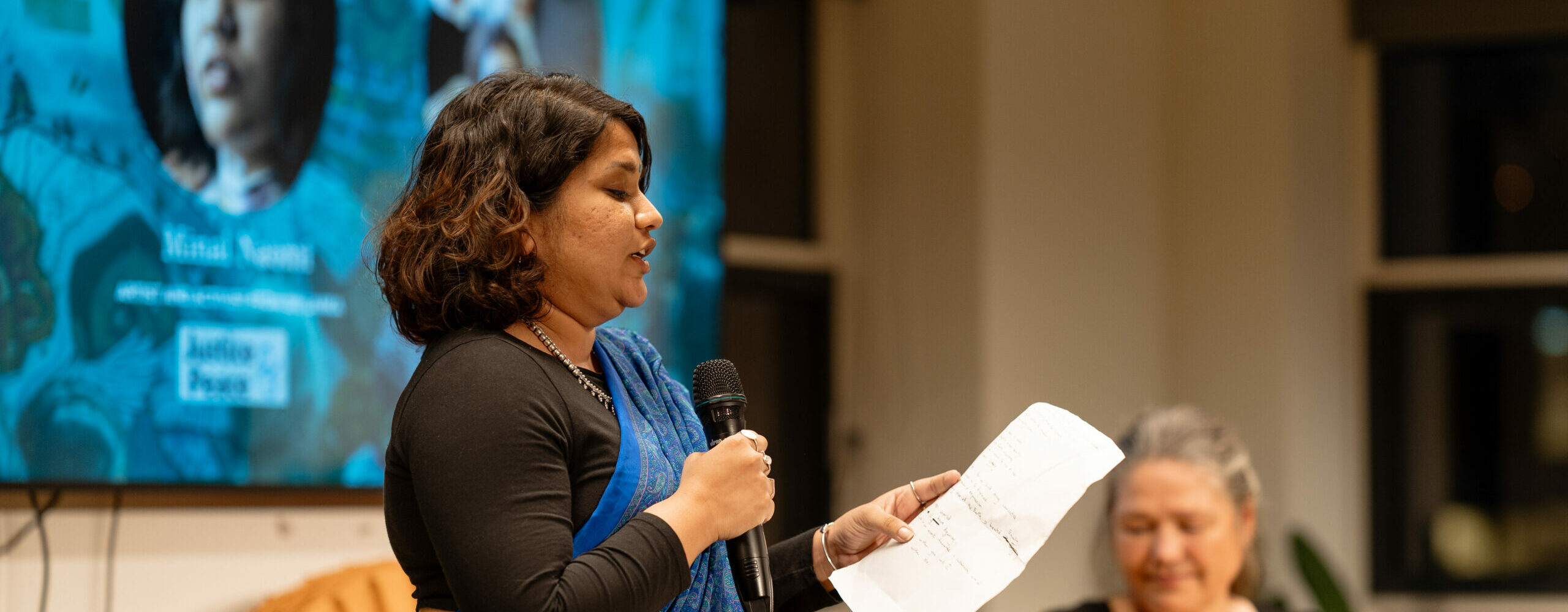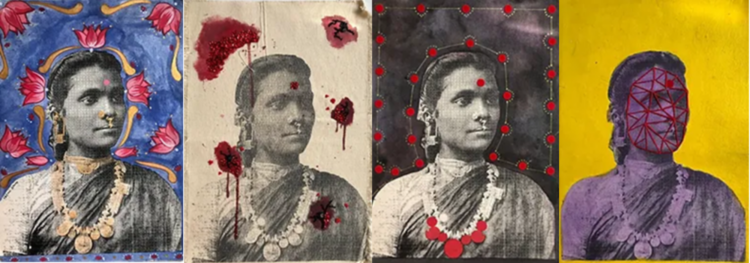Post-colonial Identity: An exhibition by Artists’ Safe Haven resident Minal Naomi
Justice & Peace welcomes you to the exhibition ‘Post-colonial Identity’.
The exhibition premiered Minal’s artworks in the Netherlands as the first showcase of her residency within the Artists’ Safe Haven initiative. Minal is an artist, human rights defender, and educator, who has previously showcased her art at the United Nations Human Rights Art Festival. Additionally, she is an ambassador for the Fearless Collective, a public art feminist movement that works with women from diverse backgrounds. Together, they co-create murals that give women from South Asia and beyond more visibility on the streets.
‘Post-colonial Identity’ Exhibition
This exhibition took a multidisciplinary mixed-media approach to explore and deconstruct identity in contemporary Sri Lanka.
The artworks of Minal highlight the multi-ethnic population of Sri Lanka and demonstrate how they challenge the societal perception of Sri Lankan identity, as constructed by the British colonial power. The exhibition took the audience on a historical and personal journey to understand the intersection of the colonial gaze and today’s Sri Lankan society.
Concept note by Minal
This exhibition explored the post-colonial Identity of Sri Lanka, previously known as the island of Ceylon. Originally colonized by the Portuguese in 1505, the country was mainly used for the trade of its spices. The Dutch arrived in Sri Lanka in 1640 and freed the country from the Portuguese with the Sinhalese (local) kings. The Dutch ruled many coastal towns in Ceylon under the governorate of the Dutch East India Company. They built forts and engaged in spice and tobacco trade. Eventually, they were succeeded by the British who ruled Ceylon for hundreds of years.
Since its Independence, Sri Lanka has grappled with its Identity. Whilst they struggled with this notion, the country plunged into a 30-year-long civil war. The Sinhalese majority, along with the State, was fighting the people of the North, particularly the Tamil community, that was fighting for their own Independence and separation from the State. The ethno-religious divide led to suspicion of anyone ‘different’ or the ‘other’. This is still prevalent today in many communities and is also used politically by different parties for their own power and agendas.
This exhibition explored the many nuances that make Sri Lanka what it is today – a vibrant, multicultural island in the Indian Ocean. Our roots are undoubtedly tied deeply with foreign settlers who came and made Sri Lanka their own home.
As a Sri Lankan, I have a unique place to belong to both the majority Sinhalese community, but also the minority Tamil and Burgher communities. This inspired me to look for other characters throughout our history – some nameless – to be able to weave the rich tapestry that makes for a pluralistic and inclusive society.
Drawing upon her work on female empowerment and women’s rights, Minal sheds light on gender-based violence in Sri Lanka and beyond. Alongside her, four human rights defenders share their stories, which examine the issue through intersectional lenses and allow for a more comprehensive understanding of the multifaceted nature of violence against women.

Minal Naomi is a multidisciplinary artist from Colombo, Sri Lanka, and a former resident of the Artists’ Safe Haven initiative. Minal creates mixed-media art forms ranging from paintings and drawings to murals, textiles, and poetry. Her work centres around issues related to identity, female empowerment, and women’s rights.


